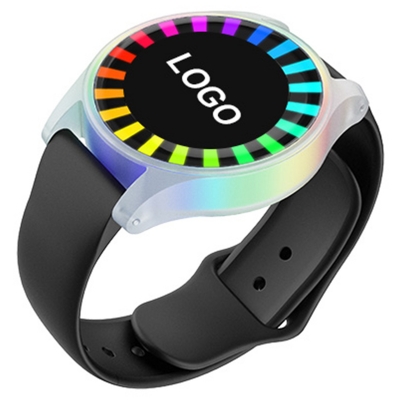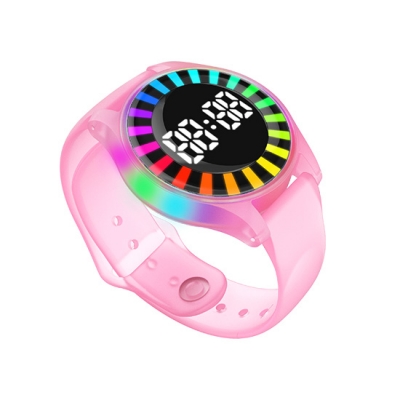Below are three factors to consider when deciding how to attach RFID tags on metal surfaces.
When mounting RFID tags on metal—a conductive surface—that tag needs to be designed to perform well on a conductive surface.Label-style tags don’t work at all, no matter how you attach them.This is because RFID tags interact with the materials they are placed on,and they react differently with conductive versus non-conductive surfaces.
Mount-on metal tags are thicker than the label-style tags that mount on plastic.These RFID tags have a profile that sticks above the surface of the asset.This means they are more exposed to potential impact that can knock the tag off of the asset. So, it’s important to ensure good bond strength between the tag and asset in case a shearing force hits the tag.
For OEMs, the best way to RFID-enable an asset is to engineer its positioning from the start. This means picking a spot for the tag on the asset where it is shielded from impacts and adverse environmental factors while proving reliable reads.The tag is more likely to stay on the asset if you engineer its placement so the adherence of the tag is not compromised by the environment. This provides better performance, lower cost and higher durability.
More than likely, you need to pick a spot on the asset where you want to mount the tag superficially. So, when it comes to attaching RFID tags on metal surfaces, here’s what you need to think about.
RFID TAGS ON METAL SURFACES: 3 FACTORS
#1. The Asset’s Environment
The environment your asset is exposed to will have a huge impact on the bonding method you use. Ask yourself questions like:
Is the asset exposed to the outdoors (cold, wet or heat)?
Does the asset go through an intense industrial process, like a kiln, an autoclave, abrasive cleaning or pressure washing?
Is the asset exposed to any chemicals?
Any of these environmental factors could stress the bond between the tag and the asset.
#2. The Asset’s Lifespan
When an asset’s lifespan is short enough, you don’t need to worry very much about the bonding method.
But metal assets are usually of high value and last a long time, so you need a bonding application that will keep your RFID tag on the asset for its whole life.
#3. The Tag’s Footprint
The strength of an adhesive bond is measured in pounds per square inch and can be calculated as the area times the strength of the adhesive. So, larger tags with a larger area will stick to objects with more force, which means it takes more force to remove the tag.
On the flip side, smaller tags have a small area, so the amount of holding force on a given adhesive is proportionally less. When an area is small enough, you get very little grip out of some adhesives. That’s why it’s important to be mindful of your adhesive selection when trying to mount a small RFID tag to an object.
Additionally,if the asset is exposed to difficult environments—like solvents, chemicals and moisture—the bond between the tag and object can be attacked along the perimeter of the tag. The smaller the tag, the greater the ratio of compromised adhesive will be,drastically reducing bond strength.
For example, in healthcare, an instrument tag from Vizinex RFID is only 2 millimeters wide and 11 millimeters long,resulting in a surface area of 22 square millimeters.These tags are designed for an autoclave environment.If the environment attacks half a millimeter on each side of the tag, half of the total bond area has been compromised.You’re left with only fifty percent of the original bond strength.
With these considerations in mind,here are three different ways to mount RFID tags on metal surfaces.
3 WAYS TO ATTACH RFID TAGS TO METAL ASSETS
Two out of three of these methods involve adhesives. It’s important to apply adhesive to a surface that is properly prepared.Corrosion, grease, oil and other surface contamination should be removed prior to applying an adhesive. Also, most adhesives work best and cure more quickly at higher temperatures.
So, as you select your method of attaching RFID tags to your assets, confirm the temperature range and what surface preparation might be required. If it’s not possible to have a clean asset prior to adhesion or you’re outside of a particular temperature range, mechanical fasteners are likely to be a better choice.
#1. Pressure Sensitive Adhesive
Pressure-sensitive adhesives are effective for attaching larger tags (for example, one-fourth inch by one inch).Larger tags often come with this type of adhesive applied,or they can be purchased as an upgrade.
To attach, you peel the release liner off the adhesive, exposing it, and press to the asset to attach.
These adhesives create long-lasting, high-strength bonds. As time goes on and assuming a benign environment, they will get stronger, and these bonds can effectively last forever.
As tags get smaller, pressure-sensitive adhesives become less effective.
#2. Epoxy
Epoxy bonds are perfect for the smaller-sized tag.
To attach RFID tags on metal surfaces with epoxy, simply apply the epoxy to the asset’s surface and press the tag into it. The epoxy will then squeeze out behind the tag and wrap around the sides of the tag, creating bonds not only with the horizontal surface but also the vertical surface. This is because the liquid is squeezing out and by capillary action grabbing to the side of the tag.
This is helpful for smaller tags because the vertical area acts as a protective barrier for the epoxy on the horizontal area, the source of the bond strength, from environmental attacks. Epoxy bonds work well for larger tags, too.
There are a number of epoxies that you can choose from. It’s important to get an epoxy that provides the right balance of benefits:
Ease of application: the dispense mechanism used, how well the epoxy stays where you dispense it and ease of cleanup.
Cure time: how long it takes for the epoxy to become strong enough to hold the tag in place and reach its full bond strength.
Bond strength & durability: how well it holds the tag to the surface and how well it endures the environment to which it will be exposed.
There are many scenarios that impact your choice of epoxy, but weighing ease of application and cure time with ideal durability will get you to the epoxy you need.
#3. Mechanical Fastener
Solutions like screws, nuts, bolts and clamps can work for some applications of RFID tags on metal surfaces.In fact,some RFID tags come with pre-drilled holes that allow for this type of fastening.
The benefit of this method is that it does not use adhesives, so the bond can’t be attacked by the environment (assuming you use a stainless-steel fastener). This is very reliable for the long term.
In order to use a screw, nut or bold, you need to drill a hole in the asset. However, doing so may disrupt the structure, strength or design of the asset – which you can’t do because it changes the design parameters.
You can also tie a tag on with something like wire or a zip tie, a convenient fastener that you can wrap around the asset and pull the tag tight to the surface.But keep in mind the environment the asset and zip tie will be exposed to.Tip ties are made out of nylon,which is not very UV resistant. Under the sun, the plastic becomes brittle and falls off.
CONCLUSION
Fastening RFID tags on metal surfaces can be a complicated endeavor.But when you consider factors like environment, lifespan and footprint, you will be able to decide what bonding method works best for your specific application.














